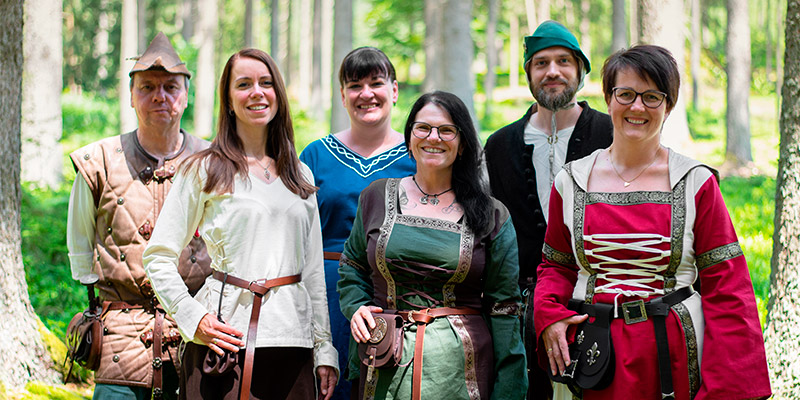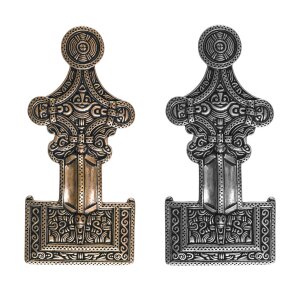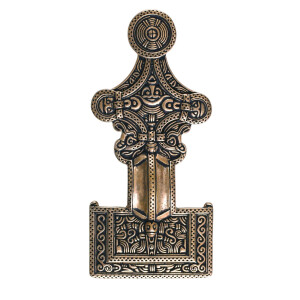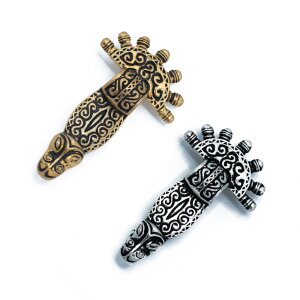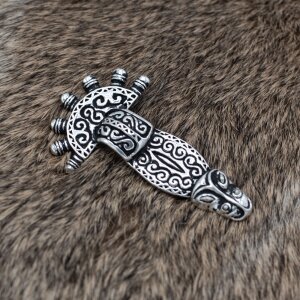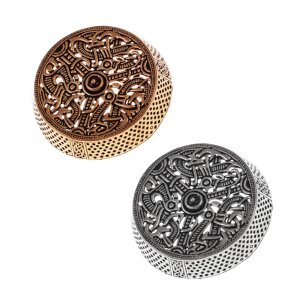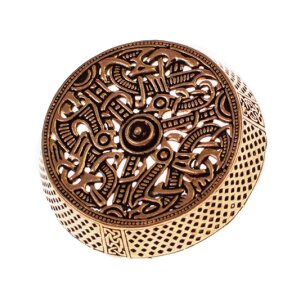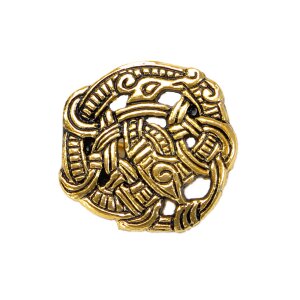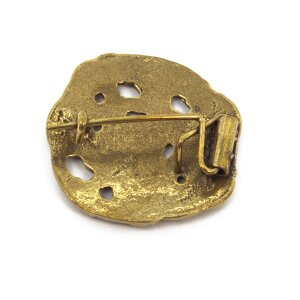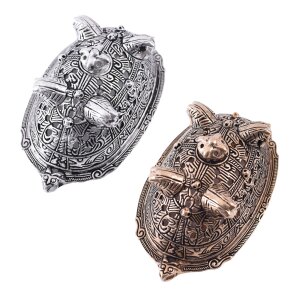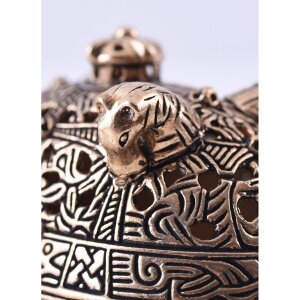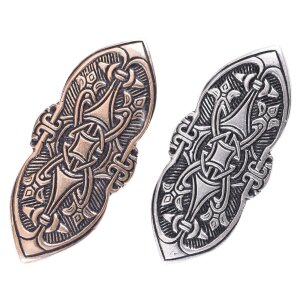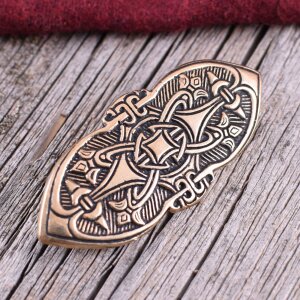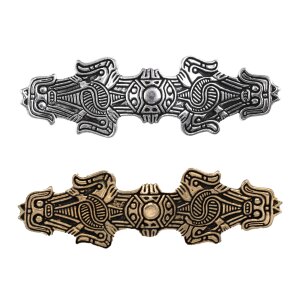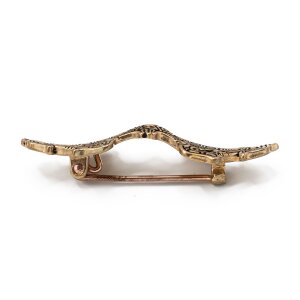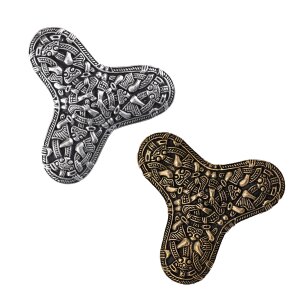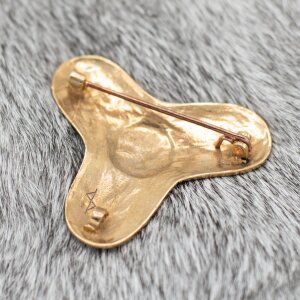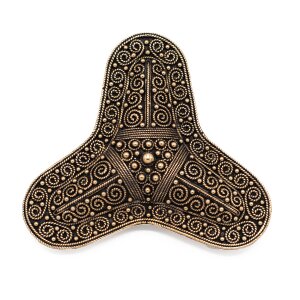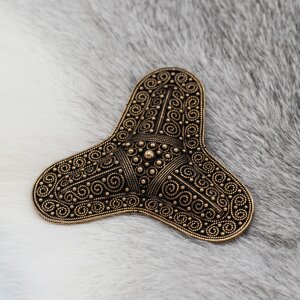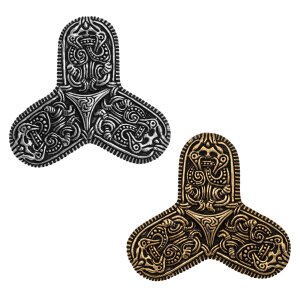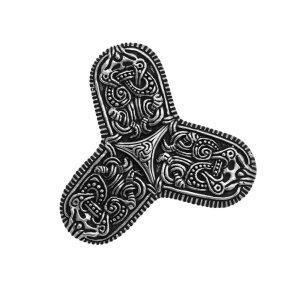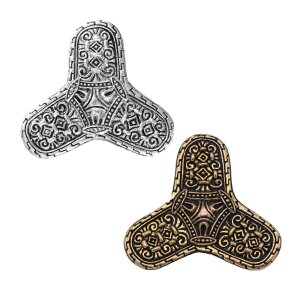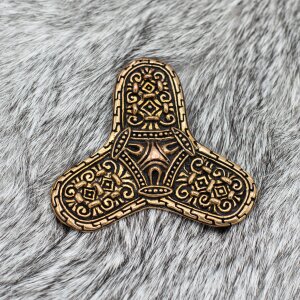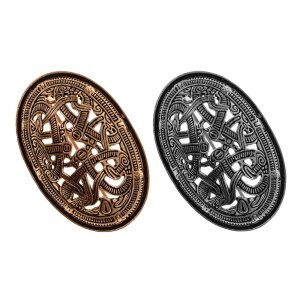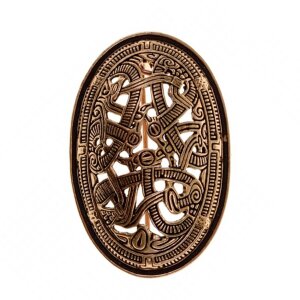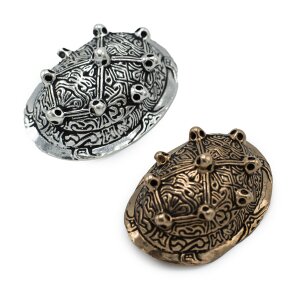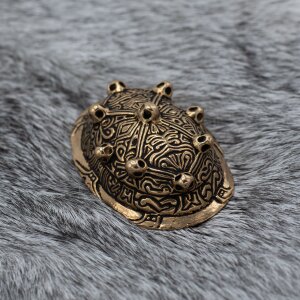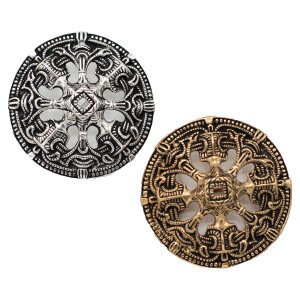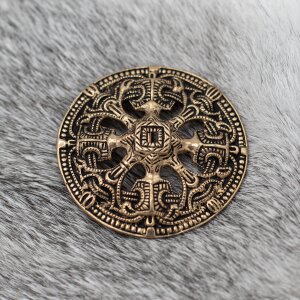Medieval brooch
- Available
-
Delivery time: 2 - 3 working days* (DE - int. shipments may differ)
Medieval brooch
A medieval brooch - also called a clasp - is a garment pin that functions like a modern-day safety pin or brooch. It consisted of a pin and a bow, was pierced through the clothing with the pin and then closed. It was used in the Middle Ages to hold together cloaks, coats and dresses. It was also a status symbol of rank and wealth, or used as an amulet to ward off evil spirits.
What was the medieval brooch made of?
The brooch could be made of different materials:
- Bronze
- iron
- gold
- silver
- Pewter
How was a fibula made?
Most brooches were made from a single casting. At the beginning the fibula was cast into shape, then it was finished by cold forming (for example hammering) or forging. Some fibula variants consisted of several parts, which were then soldered together. After the raw brooches were prepared, they could be decorated.
What types of brooches were there?
Most of the brooches were named after their shape. We will mention here only a few examples:
- bow brooch
- disc brooch
- cloverleaf brooch
- Bowl brooch
- box brooch
- Buckle brooch
- Urn brooch
In what period was the medieval brooch worn?
The oldest, proven form of the brooch comes from the older Bronze Age. For example, the spectacle brooch is known, which was used about 9th - 6th century BC. The brooch got its name because of two spiral-shaped ornamental elements, which reminds of a pair of glasses.
The brooch was multiplied over time and became more and more decorated due to new ways of processing. In the early Middle Ages, Vikings liked to wear them to hang brooch necklaces, which consisted of beads, stones and pendants. Brooches were used as clasps until the High Middle Ages, after which they were replaced by haftel and buttons, which were easier to use in their closing function.
What is the medieval brooch used for nowadays?
At medieval festivals, LARP events, for reenactment and for elegant everyday life, the brooch is still a popular piece of jewelry. Viking clothing with brooches as a clasp for the neckline to use or quite decorative, for example, two shell brooches, to which a brooch chain hangs, to put on the Viking dress can make the disguise for the next medieval market an eye-catcher. Since the brooch is also seen as a brooch, it can enhance the simple everyday clothing all at once. Through the many different variations of the brooch is offered for the Middle Ages and Viking garb a lot.

